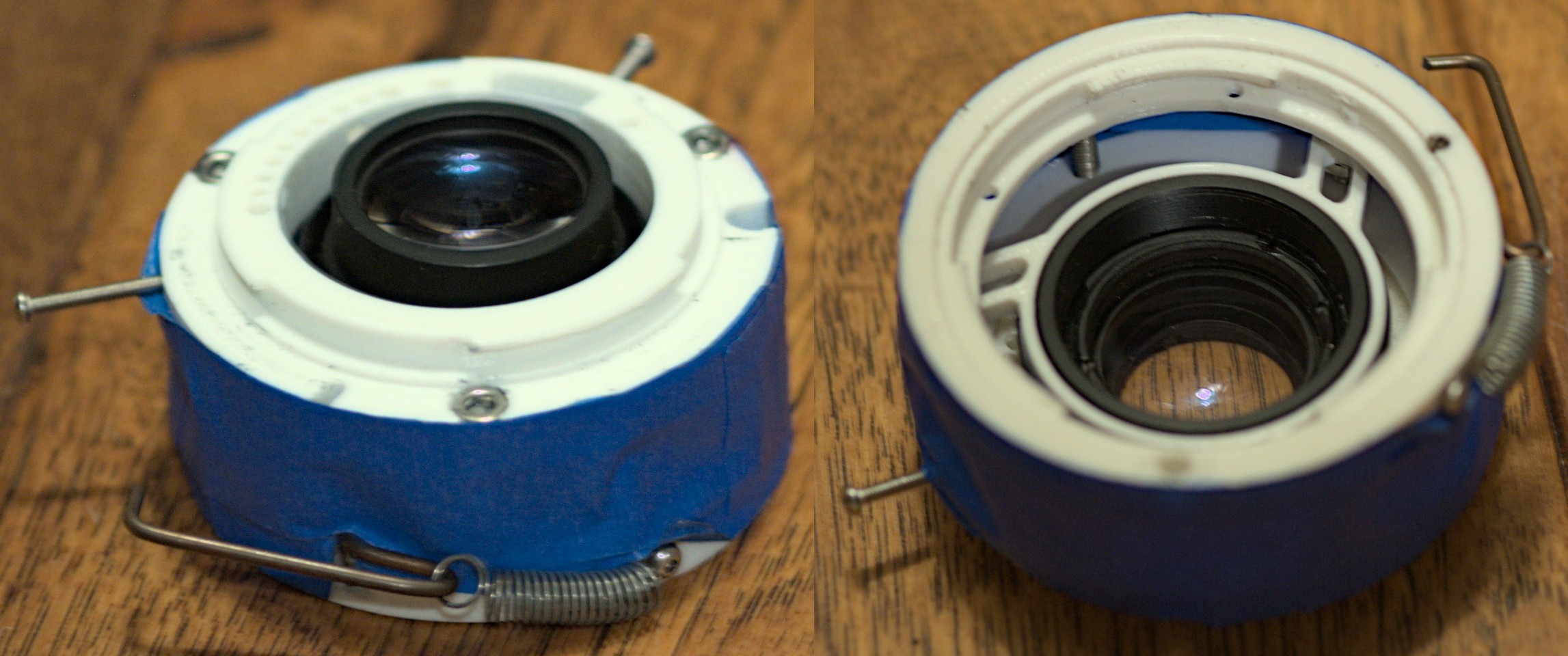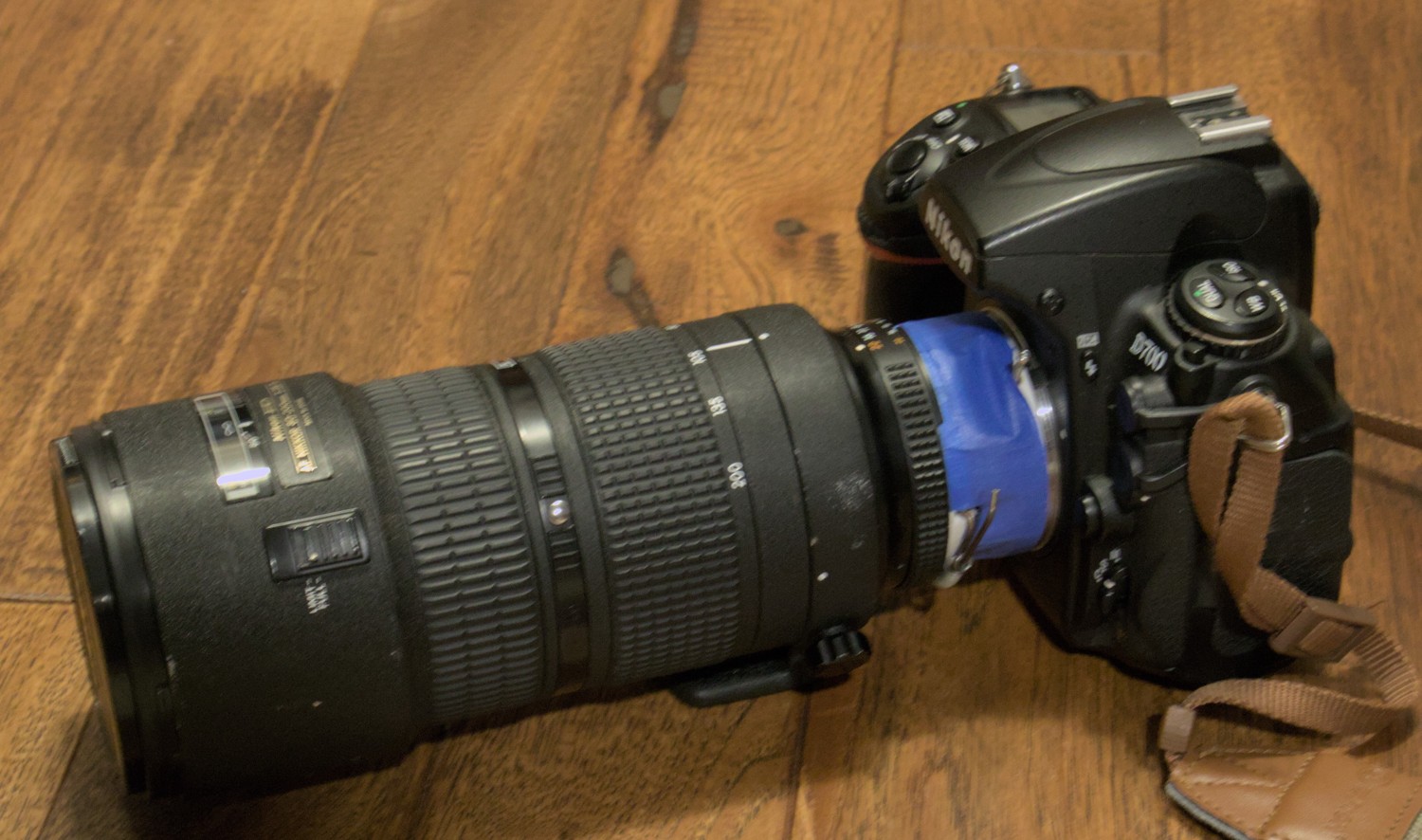3d printing a teleconverter adapter
Technical Background
A teleconverter is an optical device that, in very simplified terms, makes the image that comes out of it bigger. If the size of your camera's sensor is 36mm across, and you're using a lens that creates an image circle intended to fit around that 36mm wide sensor, sticking a teleconverter in the way will, for example, make the image circle wide enough for a 72mm sensor. Since your sensor is still the same size, though, it will see a portion of the middle of the image circle, thus achieving a sort of "zoom" or "crop" effect. Less light will be hitting it compared to normal use, thus the image will be dimmer. Additionally, the focal length remains unaffected. The focal length is a physical property of the lens, thus sticking a 2x teleconverter on a 50mm lens does not give it that pleasing 105mm portrait look, it will instead look like a 50mm, but shot from further away and with the edges chopped off.
In my very limited experience, it seems to me that an unusually small portion of the younger photography crowd (young enough to have started on digital cameras) is actually aware that these devices exist. Even then, I wouldn't take for granted that a photographer of any age is aware of them, though they used to be much more popular in the '80s. A better known devices is the telecompressor; it is usually called a "speed booster." These do essentially the opposite thing, and can be useful for adapting lenses intended for large sensors for use with smaller sensor cameras.
You do not much see teleconverters/compressors in common use because for the few niche cases where they do a "good" job it is still far cheaper and more practical to use purpose-made equipment. A cheap supertelephoto lens will probably take sharper shots than a telephoto lens with a teleconverter slapped on, and only expensive teleconverters will have the electrical contacts for enabling autofocus and lens data.
The only vaguely practical use of either of these devices is probably for using medium format lenses on a full frame camera, or full frame lenses on an APS-C camera, etc. That uses a telecompressor, which should give you the impression that teleconverters are actually not very useful, unless you happen to care about utilizing functionally outmoded technology.
Now, let's make a cheap ($5 at a thrift store) teleconverter with the wrong lens mount on it work with an obsolete Nikon D700!
The Device
The actual optics of my teleconverter are contained in a roughly 1x1cm area, and come in a neat little assembly. These optics were pulled out of a 2x teleconverter for Canon FD mount. Here's a montage of the disassembly to give you an idea of how little of this part actually has light passing through it:

Somehow, every single image in the entire montage is horribly out of focus. Do consider this not a display of vast incompetence, but rather a fond call-forward to the impeccable optical quality of the unquestionably peerless teleconverter that I've carefully gutted out here.
I took some measurements off the optics using my reasonably-priced calipers, and more than some measurements off both mount sides of my Nikon D700 and a lens. I made 3d models of each mount, and printed essentially the functional surfaces + 2 layers on bottom, and test fit these pieces against the camera and lens to ensure both fit fairly well. There is no reason for me to print more than I have to before my design has been locked in, and the less material that goes into a print, the faster it will be produced.
By far the worst part of this process was wrestling with FreeCAD's geometric solver in order to create the models. Having used Autodesk Inventor, Dassault Systèmes SOLIDWORKS, and Trimble SketchUp, I can safely reassure any of you that have tried using FreeCAD that indeed, you are not terrible with CAD, FreeCAD is just very clunky to use and 10x slower to model with than Inventor or Solidworks. However, I am running Arch Linux on my main system (i use arch btw), and the CAD situation on Linux is physically, metaphysically, computationally, and emotionally painful. Maybe I'll try Plasticity at some point, because I refuse to pipe the bloat through Proton or a VM.
If none of those words at the end there make sense to you, don't worry about it. Perhaps I'll write a document outlining the lingo I use.
So, some designing, modeling, and a few test prints later, here's the 3d situation:

And these things, but manifest:

I'd not the foresight to document the assembly of this creation as it came together, unlike the shots for gutting the donor part, which I took in case I wanted to get it back together afterwards. You will note there are extra holes and mounting spaces present in the part- those are there in case I feel like wiring this up to get autofocus back.
Not pictured in the CAD are the hardware pieces that hold this thing together. I just used standard metric bolts, and some brass heat-inserts and nuts. The portion of the optic that my print is grabbing onto is actually threaded- it conveniently came that way. The pin for locking the teleconverter to the lens is made from some TIG filler rod and held taut with a spring. Finally, I used an extremely obscure and difficult technique to stop light from leaking in. I know it looks like I wrapped blue tape around the thing a few times, but I promise it's actually a high-grade aerospace specialty material that happens to be chemically identical to blue tape.
Perhaps you are wondering, can a few mm of 3d printed plastic actually stay on the camera, let alone hold a lens?

YES, easily. Just don't wave it around or torque on it like a madman and you'll be fine.
I am in the process of writing this article. Next update: images taken with this setup.
Nick